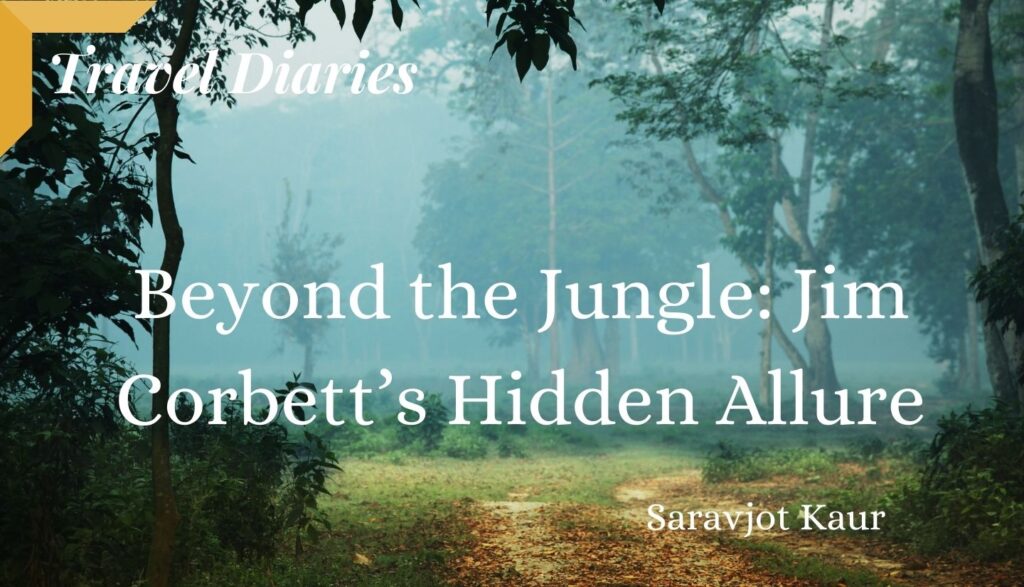
As the summer heat discreetly spreads its tentacles, a hill station seems the obvious choice for a holiday. The teenagers are reluctant. The beleaguering discussion takes an interesting turn when the older teen throws open the idea of a road trip to Jim Corbett National Park.
“Ah! This sounds interesting.” The unanimous utterance seals the trip and the planning begins.
The total distance from Chandigarh to Corbett is 340 kilometres, a seven-hour fast-paced drive. It is a smooth drive on national highway 344 and a couple of kilometres along state highways. We choose a car drive for the love of travelling through four states – Punjab, Haryana, Uttar Pradesh and Uttarakhand. Enjoying the cultural diversity and topography is an unparalled experience. Haridwar is an important city enroute and it can’t be missed. The sight of the mighty Ganga is breath-taking. It is a short stop as we were aware of large scale highway upgradation work underway and we did not want to lose time in reaching the final destination.
The last stretch of the drive to Jim Corbett is winding roads through lush greenery, where teak and sal trees give a feeling of proximity to the forest. The change in terrain and foliage leaves one awestruck.
Statistics
Jim Corbett forest is a dense, moist, deciduous forest mainly consists of sal, haldu, peepal, rohini and mango trees. Forest covers almost 73% of the park, while 10% of the area consists of grasslands. It houses around 110 tree species, 50 species of mammals, 580 bird species and 25 reptile species. It is home to the largest population of tigers amongst all the national parks. Tigers remain the biggest attraction.
The Safari
The jungle safari is booked online in advance on the official website of the national park. We selected the morning slot of 6:00 am. Recommendations are that tiger sighting is more likely in the wee hours. Most hotels provide complementary drop at the safari gate from where an assigned official vehicle accompanied by a qualified guide ushers the tourists inside the forest. Light jackets and drapes are recommended even during early summer as the drive is through the jungle. The Tiger is the focus of the safari as the guide announces. One can’t miss the hullabaloo from vehicles ferrying eager tourists in and out of the jungle discussing likelihood of sighting the tiger. The guide vehemently advises several detours to the jeep driver, knowing how impatient tourists can get. We catch a couple of fresh paw prints alongside water bodies. The thrill gives me goose-bumps. The feeling that you are into the untamed wilderness is beyond description.
The scent of damp wood mingled with the aroma of flowering wilderness is equally adventurous. We question the guide on names of trees, their uses and lifecycle. He opens up his encyclopaedia of knowledge happily. Gauging our keenness towards the plantations, he guides the jeep to the core of the jungle and switches off the ignition. First rays of the sun create magic shining through the canopy of intermingled vines, shrubs and trees. We are signalled to close our eyes and breathe. The next five minutes are spent in listlessness as the breeze caresses the leaves, leaving them with a soft rustle as gentle as silk. An experience that is rejuvenating. We drive in utter silence after that as the aftereffects of blankness linger.
As we reach the exit to the safari, the guide turns around and asks, “I’m disappointed we couldn’t sight any tiger.” I smile back saying, “What we witnessed is so ethereal that the experience will not leave us for a long time!”
Sometimes all we need to do is search beyond the evident. What we find is seldom disappointing.
Saravjot Kaur
